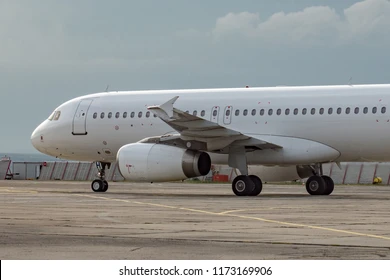While each airline has a distinct livery, the vast majority of the plane is almost always white. There are, of course, exceptions to the rule. A notable one is Air New Zealand, which painted its aircraft black as part of a $13.3 million marketing partnership with Tourism New Zealand.

While the entire fuselage was painted black, the airline still managed to keep its name and the koru design on the tail and iconic silver fern white. Other airlines have also used their aircraft for marketing campaigns, but generally, it’s one or two aircraft rather than the entire fleet.
So why are most aircraft painted white? Let’s take a look.
White paint saves money
Paint on a plane adds anywhere from 600 to 1,200 pounds to the aircraft’s weight. This extra weight increases the amount of fuel a plane burns and is equivalent to carrying as many as eight additional passengers. Removing this unnecessary weight makes the flights cheaper to operate.
The paint also costs money, both for the initial paint job and for repaints when the color begins to dull. It’s been proven that the color white does not fade as fast as other colors, meaning that the aircraft has to be repainted less frequently.

A typical Boeing 747 paint job uses around 120 gallons, while a 767 uses approximately 90 gallons. All told, painting a commercial airliner can cost anywhere from $50,000 to $200,000.
Of course, there is a benefit to having a mainly white plane when it comes to change of ownership too. Many airlines sell their planes on to other carriers, or leasing companies do, and by keeping the main body white, it is less expensive to change the livery.
White keeps the plane cooler
When we say it makes the plane cooler, we don’t mean in the hip sense, but the amount of heat an aircraft absorbs from the sun. Think of it like your wardrobe and why lighter clothes dominate what we wear in the summer.
Painting an aircraft white helps to reflect the sunlight and minimize the amount of energy needed to keep the plane comfortable. Modern planes that are made from composite materials need even more protection from the sun as they can be damaged by UV radiation, which is another reason why white paint is used.

Concorde was painted with a type of highly-reflective white paint to withstand the heat it produced during supersonic flight. Both the nose and leading edges of the British–French manufactured plane could reach temperatures of as hot as 127°C ( 260.6°F).
Safety and maintenance
By painting an aircraft white, it is much easier for the maintenance crews to spot any damage. This allows oil spills/leaks, cracks, and other faults to be identified and fixed promptly. Painting the plane white also helps avoid bird strikes allowing waterfowl and other birds to see the aircraft and avoid hitting it. Painting in the plane in darker colors would make it blend in with the ground and decrease a bird’s ability to see it.
The same can be said for search and rescue, as a white fuselage helps rescuers spot a crash site much more easily.
Author –
Mark Finlay
Journalist – Mark is an experienced travel journalist having published work in the industry for more than seven years. His enthusiasm for aviation news and wealth of experience lends itself to some excellent insight, with his work cited in Forbes amongst other publications. Based in Alicante, Spain.





![✈️ Private Pilot License (PPL) Cost Breakdown in 2025 [USA Edition]](https://aeropeep.com/wp-content/uploads/2025/05/image-24-300x200.png)
